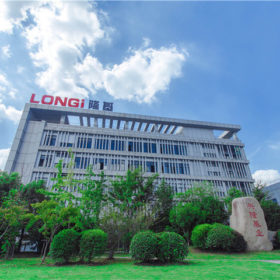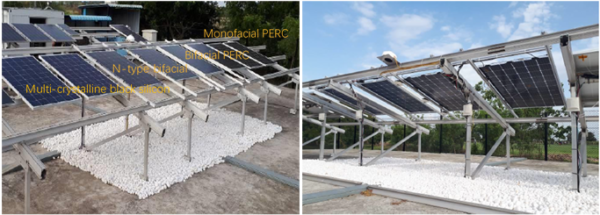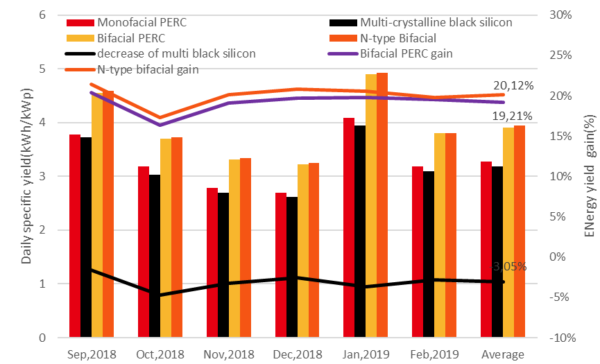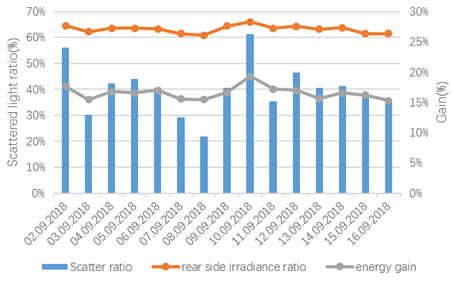
In a white paper published this week, Chinese module maker Longi Solar shares six months of data from a testing site in India that was built in cooperation with German testing institute TÜV Rheinland. The results show energy yield gains of around 20% for both bifacial mono PERC and n-type modules.
In a bid to verify claims about the potential energy yield gains offered by bifacial solar modules, Chinese panel giant Longi Solar joined forces with German testing institute TÜV Rheinland to install eight modules and record performance.
The installation was made in September last year at Chennai, in southeastern India, and Longi this week published the results of the first six months of testing in a white paper.
The installation comprises two panels each of four different module types: single-sided and bifacial PERC modules made by the Chinese manufacturer as well as multicrystalline black silicon products and n-type, frameless bifacial models, supplied by unnamed producers. All were installed on fixed-tilt racking at a 15-degree angle a meter above ground. White gravel was added below the bifacial modules. The pilot also features a pyranometer to measure frontside irradiance and three installed on the rear, to measure irradiance at heights of 1m, 1.2m and 1.4 m.

The chart below illustrates the energy yield of the four module types for the six-month period between September 2018 and February.
Longi said both bifacial modules greatly outperformed single-sided products – the bifacial PERC module achieved a 19.21% yield gain and the double-sided n-type product recorded a 20.12% gain, compared to the yield from Longi’s single-sided PERC product.

The single-sided PERC module outperformed its multi-cSi black silicon panel by 3.05%, a performance Longi attributed to PERC’s better temperature coefficient and low-irradiance performance.
Of the two bifacial modules, Longi said the 0.76% higher yield for the n-type module was mainly down to its being frameless. Longi’s bifacial module has a frame, which causes unavoidable shading on the rear side. Longi said without the frame, the generation capacity of the two products would have been “basically the same” and noted the frame offers advantages in long-term reliability. The manufacturer added, the p-type bifacial PERC module is currently cheaper than n-type technologies.
Data from the testing site also indicated bifacial boost was considerably higher on days with more scattered sunlight. The following chart illustrates the rear-side irradiation, power generation gain and sunlight scattering ratio for a two-week period in September 2018, demonstrating the higher the ratio of rear-side to front-side irradiation, the higher the bifacial boost.

Longi also noted the bifacial gains demonstrated in its data were generally stable over the six months, with the dip seen in October 2018 visible in the first chart above attributed to a power breakage.
On-site data from bifacial installations is a much sought-after commodity, with the developers of energy yield models seeking to validate their assumptions and create models which can accurately calculate the yield of bifacial installations. pv magazine investigates this issue further in our November print edition and in a webinar to be held on Tuesday, November 12th. Register for free here.
Lắp đặt điện mặt trời Khải Minh Tech
https://ift.tt/2X7bF6x
0906633505
info.khaiminhtech@gmail.com
80/39 Trần Quang Diệu, Phường 14, Quận 3
Lắp đặt điện mặt trời Khải Minh Tech
https://ift.tt/2ZH4TRU
Không có nhận xét nào:
Đăng nhận xét